
English Encyclopedia
 International cities
International cities


Adelaide [ˈædəleɪd] ist die Hauptstadt des Bundesstaates South Australia in Australien. Adelaide ist eine Küstenstadt am Saint-Vincent-Golf und wurde vom ersten Gouverneur des Staates, Captain John Hindmarsh (1785–1860), 1837 nach der britischen Königin Adelaide (Adelheid von Sachsen-Meiningen) benannt. Adelaide ging im Gegensatz zu Städten wie Sydney oder Hobart nicht aus einer Sträflingskolonie hervor.
Die Stadt trägt wegen ihrer Kulturveranstaltungen den Beinamen „festival city“, so etwa das Glenelg Jazz Festival oder das Adelaide Festival of Arts. Ebenso wird Adelaide „city of churches“ (Stadt der Kirchen) genannt. Adelaide ist Austragungsort mehrerer sportlicher Veranstaltungen, so z. B. von 1985 bis 1995 des Großen Preises von Australien der Formel 1 auf dem Adelaide Street Circuit.
Die Stadt Adelaide besteht eigentlich nur aus dem Stadtkern innerhalb des Parkrings, unterteilt in Adelaide und North Adelaide. Sie hat 22.000 Einwohner.[2][3] Man rechnet jedoch die direkt umliegenden etwa 250 Orte zum städtischen Bereich hinzu.
In einer Rangliste der Städte nach ihrer Lebensqualität belegte Adelaide im Jahre 2018 den 29. Platz unter 231 untersuchten Städten weltweit.

Annapolis (/əˈnæpəlɪs/ ( listen) ə-NAP-ə-lis), the capital of the U.S. state of Maryland, also functions as the county seat of Anne Arundel County. Situated on the Chesapeake Bay at the mouth of the Severn River, 25 miles (40 km) south of Baltimore and about 30 miles (50 km) east of Washington, D.C., Annapolis forms part of the Baltimore–Washington metropolitan area. The 2020 census recorded its population as 40,812, an increase of 6.3% since 2010.
listen) ə-NAP-ə-lis), the capital of the U.S. state of Maryland, also functions as the county seat of Anne Arundel County. Situated on the Chesapeake Bay at the mouth of the Severn River, 25 miles (40 km) south of Baltimore and about 30 miles (50 km) east of Washington, D.C., Annapolis forms part of the Baltimore–Washington metropolitan area. The 2020 census recorded its population as 40,812, an increase of 6.3% since 2010.
This city served as the seat of the Confederation Congress (former Second Continental Congress) and temporary national capital of the United States in 1783–1784. At that time, General George Washington came before the body convened in the new Maryland State House and resigned his commission as commander of the Continental Army. A month later, the Congress ratified the Treaty of Paris of 1783, ending the American Revolutionary War, with Great Britain recognizing the independence of the United States. The city and state capitol was also the site of the 1786 Annapolis Convention, which issued a call to the states to send delegates for the Constitutional Convention to be held the following year in Philadelphia. Over 220 years later, the Annapolis Peace Conference took place in 2007.
Annapolis is the home of St. John's College, founded 1696; the United States Naval Academy, established 1845, is adjacent to the city limits.


Atlanta (/ætˈlæntə/) is the capital of, and the most populous city in, the U.S. state of Georgia. With an estimated 2017 population of 486,290,[13] it is also the 39th most-populous city in the United States. The city serves as the cultural and economic center of the Atlanta metropolitan area, home to 5.8 million people and the ninth-largest metropolitan area in the nation.[7] Atlanta is the seat of Fulton County, the most populous county in Georgia. A small portion of the city extends eastward into neighboring DeKalb County.
Atlanta was founded as a transportation hub at the intersection of two railroad lines in 1837. After being mostly burned to the ground during the American Civil War, the city rose from its ashes to become a national center of commerce and the unofficial capital of the "New South". During the 1950s and 1960s, Atlanta became a major organizing center of the civil rights movement, with Dr. Martin Luther King Jr., Ralph David Abernathy, and many other locals playing major roles in the movement's leadership. In the decades following, the city earned a reputation as "too busy to hate" for the relatively progressive views of its citizens and leaders compared to other cities in the "Deep South".[14] During the modern era, Atlanta has attained international prominence as a major air transportation hub, with Hartsfield–Jackson Atlanta International Airport being the world's busiest airport by passenger traffic since 1998.[15][16][17][18]
Atlanta is rated as a "beta(+)" world city that exerts a moderate impact on global commerce, finance, research, technology, education, media, art, and entertainment.[19] It ranks in the top twenty among world cities and 10th in the nation with a gross domestic product (GDP) of $385 billion.[20][21] Atlanta's economy is considered diverse, with dominant sectors that include transportation, logistics, professional and business services, media operations, medical services, and information technology.[22] Atlanta has topographic features that include rolling hills and dense tree coverage, earning it the nickname of "the city in a forest."[23] Revitalization of Atlanta's neighborhoods, initially spurred by the 1996 Summer Olympics, has intensified in the 21st century, altering the city's demographics, politics, and culture.[24][25]
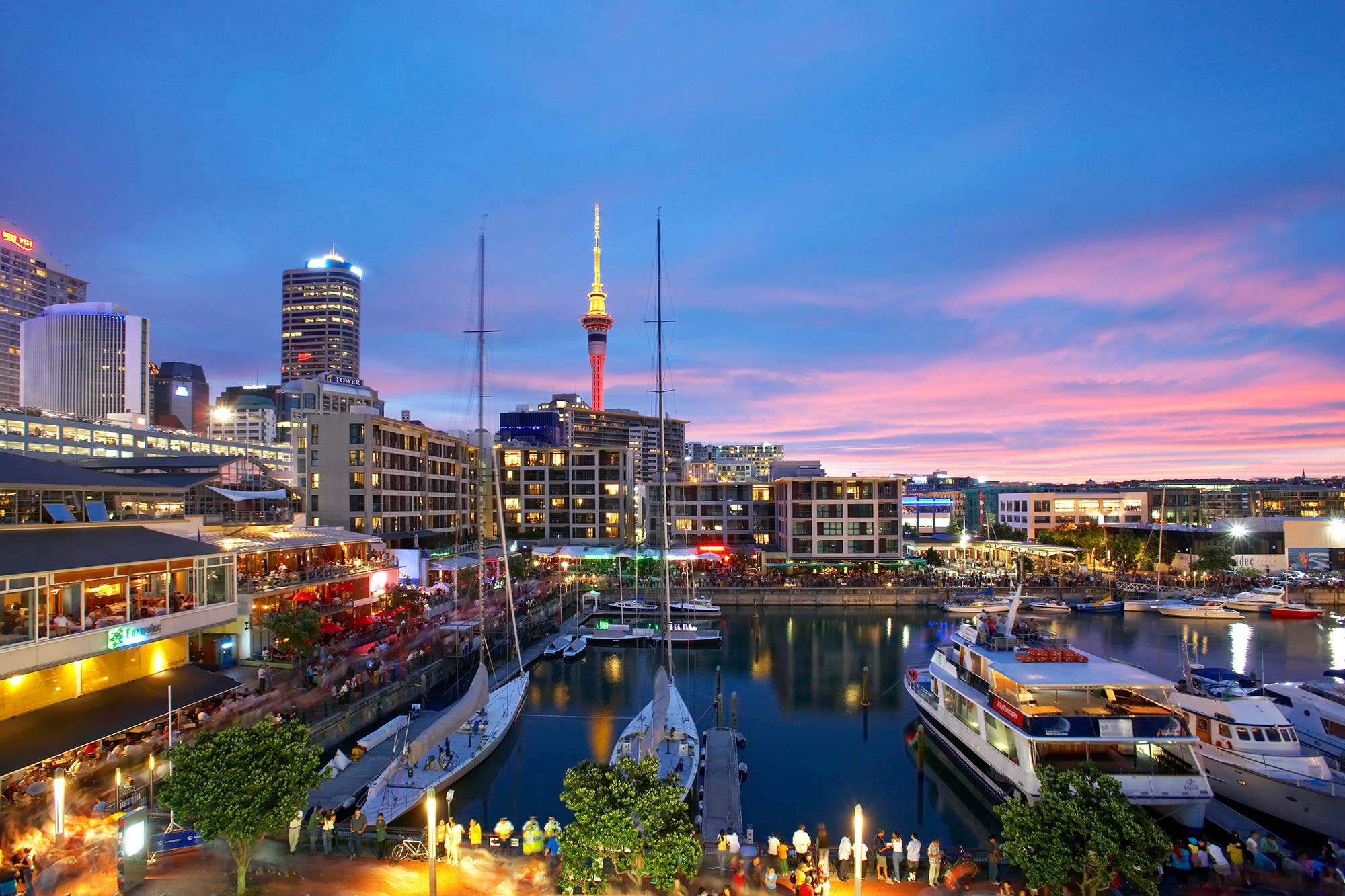
Auckland (Māori: Tāmaki Makaurau) is a large metropolitan city in the North Island of New Zealand. The most populous urban area in the country, Auckland has an urban population of about 1,463,000 (June 2021).[4] It is located in the Auckland Region—the area governed by Auckland Council—which includes outlying rural areas and the islands of the Hauraki Gulf, and which has a total population of 1,715,600.[4] While Europeans continue to make up the plurality of Auckland's population, the city became multicultural and cosmopolitan in the late-20th century, with Asians accounting for 31% of the city's population in 2018.[6] Auckland is also home to the largest Polynesian population in the world.[7] The Māori-language name for Auckland is Tāmaki Makaurau, meaning "Tāmaki desired by many", in reference to the desirability of its natural resources and geography.[8]
Auckland lies between the Hauraki Gulf to the east, the Hunua Ranges to the south-east, the Manukau Harbour to the south-west, and the Waitākere Ranges and smaller ranges to the west and north-west. The surrounding hills are covered in rainforest and the landscape is dotted with 53 volcanic centres that make up the Auckland Volcanic Field. The central part of the urban area occupies a narrow isthmus between the Manukau Harbour on the Tasman Sea and the Waitematā Harbour on the Pacific Ocean. Auckland is one of the few cities in the world to have a harbour on each of two separate major bodies of water.
The isthmus on which Auckland sits was first settled c. 1350 and was valued for its rich and fertile land. The Māori population in the area is estimated to have peaked at 20,000 before the arrival of Europeans.[9] After a British colony was established in New Zealand in 1840, William Hobson, then Lieutenant-Governor of New Zealand, chose Auckland as its new capital. He named the area for George Eden, Earl of Auckland, British First Lord of the Admiralty. Māori–European conflict over land in the region led to war in the mid-19th century. In 1865, Auckland was replaced by Wellington as the capital, but continued to grow, initially because of its port and the logging and gold-mining activities in its hinterland, and later because of pastoral farming (especially dairy farming) in the surrounding area, and manufacturing in the city itself.[10] It has been the nation's largest city throughout most of its history. Today, Auckland's central business district is New Zealand's leading economic hub.
The University of Auckland, founded in 1883, is the largest university in New Zealand. The city's significant tourist attractions include national historic sites, festivals, performing arts, sports activities, and a variety of cultural institutions, such as the Auckland War Memorial Museum, the Museum of Transport and Technology, and the Auckland Art Gallery Toi o Tāmaki. Its architectural landmarks include the Harbour Bridge, the Town Hall, the Ferry Building and the Sky Tower. The city is served by Auckland Airport, which handles around 2 million international passengers a month. Despite being one of the most expensive cities in the world,[11] Auckland is recognised as one of the world's most liveable cities, ranking third in the 2019 Mercer Quality of Living Survey and at first place in a 2021 ranking of the global liveability index by The Economist.

Austin is the capital city of the U.S. state of Texas, as well as the seat and largest city of Travis County, with portions extending into Hays and Williamson counties. Incorporated on December 27, 1839, it is the 11th-most populous city in the United States,[6] the fourth-most-populous city in Texas, the second-most-populous state capital city after Phoenix, Arizona,[7][8] and the most populous state capital that is not also the most populous city in its state.[7] It has been one of the fastest growing large cities in the United States since 2010.[9][10][11] The Greater Austin and Greater San Antonio areas are separated from each other by approximately 80 miles (129 km) along Interstate 35. It is anticipated that both regions may form a new metroplex similar to Dallas and Fort Worth.[12][13] Austin is the southernmost state capital in the contiguous United States and is considered a "Beta −" global city as categorized by the Globalization and World Cities Research Network.[14]
As of the 2020 census, Austin had a population of 961,855,[15] up from 790,491 at the 2010 census.[4] The city is the cultural and economic center of the Austin–Round Rock metropolitan statistical area, which had an estimated population of 2,295,303 as of July 1, 2020, roughly 84% increase from the year 2000.[16] Located in Central Texas within the greater Texas Hill Country, it is home to numerous lakes, rivers, and waterways, including Lady Bird Lake and Lake Travis on the Colorado River, Barton Springs, McKinney Falls, and Lake Walter E. Long.
Residents of Austin are known as Austinites.[17] They include a diverse mix of government employees, college students, musicians, high-tech workers, digital marketers, and blue-collar workers. The city's official slogan promotes Austin as "The Live Music Capital of the World", a reference to the city's many musicians and live music venues, as well as the long-running PBS TV concert series Austin City Limits.[18][19] The city also adopted "Silicon Hills" as a nickname in the 1990s due to a rapid influx of technology and development companies. In recent years, some Austinites have adopted the unofficial slogan "Keep Austin Weird",[20] which refers to the desire to protect small, unique, and local businesses from being overrun by large corporations.[21] Since the late 19th century, Austin has also been known as the "City of the Violet Crown", because of the colorful glow of light across the hills just after sunset.[22]
In 1987, Austin originated and remains the site for South by Southwest (stylized as SXSW and colloquially referred to as South By), an annual conglomeration of parallel film, interactive media, and music festivals and conferences that take place in mid-March.
Emerging from a strong economic focus on government and education, since the 1990s, Austin has become a center for technology and business.[23][24] A number of Fortune 500 companies have headquarters or regional offices in Austin, including 3M, Advanced Micro Devices (AMD), Amazon, Apple, Facebook (Meta), Google, IBM, Intel, NXP semiconductors, Oracle, Tesla, Texas Instruments, and Whole Foods Market. Dell's worldwide headquarters is located in the nearby suburb of Round Rock.[25] With regard to education, Austin is the home of the University of Texas at Austin, which is one of the largest universities in the U.S., with over 50,000 students.
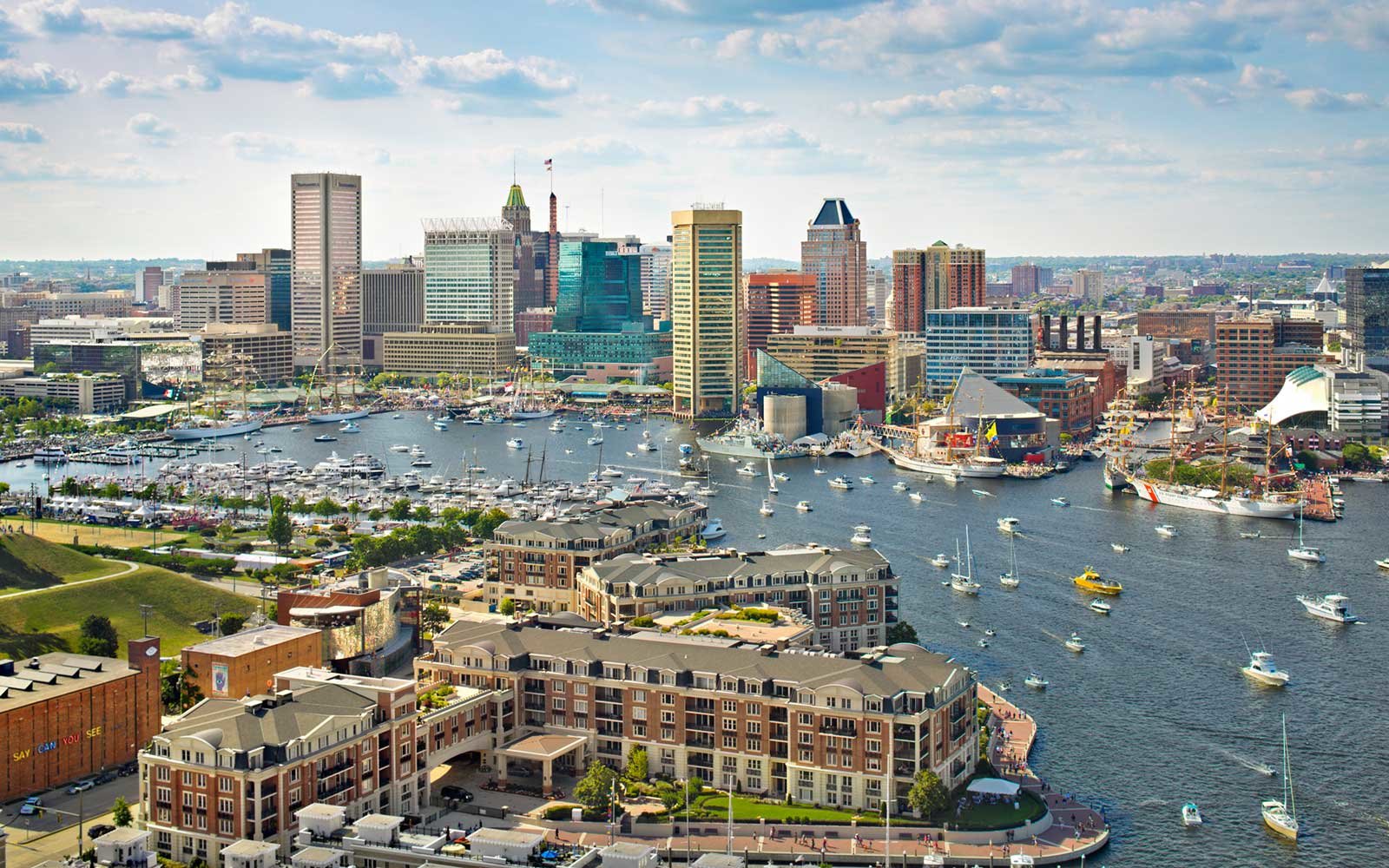
Baltimore (/ˈbɔːltɪmɔːr/ BAWL-tim-or, locally: /ˈbɔːlmər/ BAWL-mər) is the most populous city in the U.S. state of Maryland, as well as the 30th most populous city in the United States, with a population of 585,708 in 2020.[9] Baltimore was designated an independent city by the Constitution of Maryland[10] in 1851, and today is the largest independent city in the United States. As of 2017, the population of the Baltimore metropolitan area was estimated to be just under 2.802 million, making it the 21st largest metropolitan area in the country.[11] Baltimore is located about 40 miles (64 km) northeast of Washington, D.C.,[12] making it a principal city in the Washington–Baltimore combined statistical area (CSA), the third-largest CSA in the nation, with a calculated 2018 population of 9,797,063.[13]
Prior to European colonization, the Baltimore region was used as hunting grounds by the Susquehannock Native Americans, who were primarily settled further north than where the city was later built.[14] Colonists from the Province of Maryland established the Port of Baltimore in 1706 to support the tobacco trade with Europe, and established the Town of Baltimore in 1729. The first printing press and newspapers were introduced to Baltimore by Nicholas Hasselbach and William Goddard respectively, in the mid- 18th century.
The Battle of Baltimore was a pivotal engagement during the War of 1812, culminating in the failed British bombardment of Fort McHenry, during which Francis Scott Key wrote a poem that would become "The Star-Spangled Banner", which was eventually designated as the American national anthem in 1931.[15] During the Pratt Street Riot of 1861, the city was the site of some of the earliest violence associated with the American Civil War.
The Baltimore and Ohio Railroad, the oldest railroad in the United States, was built in 1830 and cemented Baltimore's status as a major transportation hub, giving producers in the Midwest and Appalachia access to the city's port. Baltimore's Inner Harbor was once the second leading port of entry for immigrants to the United States. In addition, Baltimore was a major manufacturing center.[16] After a decline in major manufacturing, heavy industry, and restructuring of the rail industry, Baltimore has shifted to a service-oriented economy. Johns Hopkins Hospital and Johns Hopkins University are the city's top two employers.[17] Baltimore and its surrounding region are home to the headquarters of a number of major organizations and government agencies, including the NAACP, ABET, the National Federation of the Blind, Catholic Relief Services, the Centers for Medicare & Medicaid Services, and the Social Security Administration.
Many of Baltimore's neighborhoods have rich histories. The city is home to some of the earliest National Register Historic Districts in the nation, including Fell's Point, Federal Hill, and Mount Vernon. These were added to the National Register between 1969 and 1971, soon after historic preservation legislation was passed. Baltimore has more public statues and monuments per capita than any other city in the country.[18] Nearly one third of the city's buildings (over 65,000) are designated as historic in the National Register, which is more than any other U.S. city.

Bath (/bɑːθ/ ( listen) or /bæθ/ (
listen) or /bæθ/ ( listen))[2] is the largest city in the county of Somerset,[3] England, known for and named after its Roman-built baths. In 2019, the population was 101,106.[3] Bath is in the valley of the River Avon, 97 miles (156 km) west of London and 11 miles (18 km) southeast of Bristol. The city became a World Heritage Site in 1987, and was later added to the transnational World Heritage Site known as the "Great Spa Towns of Europe" in 2021.
listen))[2] is the largest city in the county of Somerset,[3] England, known for and named after its Roman-built baths. In 2019, the population was 101,106.[3] Bath is in the valley of the River Avon, 97 miles (156 km) west of London and 11 miles (18 km) southeast of Bristol. The city became a World Heritage Site in 1987, and was later added to the transnational World Heritage Site known as the "Great Spa Towns of Europe" in 2021.
The city became a spa with the Latin name Aquae Sulis ("the waters of Sulis") c. 60 AD when the Romans built baths and a temple in the valley of the River Avon, although hot springs were known even before then.
Bath Abbey was founded in the 7th century and became a religious centre; the building was rebuilt in the 12th and 16th centuries. In the 17th century, claims were made for the curative properties of water from the springs, and Bath became popular as a spa town in the Georgian era. Georgian architecture, crafted from Bath stone, includes the Royal Crescent, Circus, Pump Room and Assembly Rooms where Beau Nash presided over the city's social life from 1705 until his death in 1761.
Many of the streets and squares were laid out by John Wood, the Elder, and in the 18th century the city became fashionable and the population grew. Jane Austen lived in Bath in the early 19th century. Further building was undertaken in the 19th century and following the Bath Blitz in World War II. Bath became part of the county of Avon in 1974, and, following Avon's abolition in 1996, has been the principal centre of Bath and North East Somerset.
Bath has up to 1.3 million yearly visitors,[4] making it one of ten English cities visited most by overseas tourists.[5][6] Attractions include the spas, canal boat tours, Royal Crescent, Bath Skyline, Parade Gardens and Royal Victoria Park which hosts carnivals and seasonal events. Shopping areas include SouthGate shopping centre, The Corridor arcade and artisan shops at Walcot, Milsom, Stall and York Streets. There are theatres, including the Theatre Royal, as well as several museums including the Museum of Bath Architecture, the Victoria Art Gallery, the Museum of East Asian Art, the Herschel Museum of Astronomy, Fashion Museum, and the Holburne Museum. The city has two universities – the University of Bath and Bath Spa University – with Bath College providing further education. Sporting clubs include Bath Rugby and Bath City F.C. The city is also home to software, publishing and service-oriented industries such as Future plc and Rotork.

Belfast (UK: /ˈbɛlfɑːst/ BEL-fahst, elsewhere /ˈbɛlfæst/; from Irish: Béal Feirste [bʲeːlˠ ˈfʲɛɾˠ(ə)ʃtʲə], meaning 'mouth of the sand-bank ford'[4]) is the capital and largest city of Northern Ireland, standing on the banks of the River Lagan on the east coast. It is the 12th-largest city in the United Kingdom[5] and the second-largest on the island of Ireland. It had a population of 343,542 in 2019.[2] Belfast suffered greatly during the violence that accompanied the partition of Ireland, and especially during the more recent conflict known as the Troubles.
By the early 19th century, Belfast was a major port. It played an important role in the Industrial Revolution in Ireland, becoming briefly the biggest linen-producer in the world, earning it the nickname "Linenopolis".[6] By the time it was granted city status in 1888, it was a major centre of Irish linen production, tobacco-processing and rope-making. Shipbuilding was also a key industry; the Harland and Wolff shipyard, which built the RMS Titanic, was the world's largest shipyard.[7] Belfast as of 2019 has a major aerospace and missiles industry. Industrialisation, and the inward migration[8] it brought, made Belfast Northern Ireland's biggest city. Following the partition of Ireland in 1921, Belfast became the seat of government for Northern Ireland. Belfast's status as a global industrial centre ended in the decades after the Second World War.
Belfast is still a port with commercial and industrial docks, including the Harland and Wolff shipyard, dominating the Belfast Lough shoreline. It is served by two airports: George Best Belfast City Airport, 3 miles (5 kilometres) from the city centre, and Belfast International Airport 15 miles (24 kilometres) west of the city. The Globalization and World Cities Research Network (GaWC) listed Belfast as a Gamma + global city in 2020.

Birmingham (/ˈbɜːrmɪŋəm/ ( listen)[3][4][5] BUR-ming-əm) is a major city and metropolitan borough in the West Midlands, England. It is the second-largest city, second-largest metropolitan area and third-largest urban area in the United Kingdom,[b][6] with roughly 1.2 million inhabitants within the city area, 2.8 million inhabitants within the urban area,[7] and 4.3 million inhabitants within the metropolitan area.[8] The city proper is the most populated English local government district.[9] Birmingham is commonly referred to as the "second city of the United Kingdom".[10][11]
listen)[3][4][5] BUR-ming-əm) is a major city and metropolitan borough in the West Midlands, England. It is the second-largest city, second-largest metropolitan area and third-largest urban area in the United Kingdom,[b][6] with roughly 1.2 million inhabitants within the city area, 2.8 million inhabitants within the urban area,[7] and 4.3 million inhabitants within the metropolitan area.[8] The city proper is the most populated English local government district.[9] Birmingham is commonly referred to as the "second city of the United Kingdom".[10][11]
Located in the West Midlands county and region in England, approximately 100 miles (160 km) from Central London, Birmingham, as one of the United Kingdom's major cities, is considered to be the social, cultural, financial, and commercial centre of the Midlands. Distinctively, Birmingham only has small rivers flowing through it, mainly the River Tame and its tributaries River Rea and River Cole – one of the closest main rivers is the Severn, approximately 20 miles (32 km) west of the city centre.
Historically a market town in Warwickshire in the medieval period, Birmingham grew during the 18th century during the Midlands Enlightenment and during the Industrial Revolution, which saw advances in science, technology, and economic development, producing a series of innovations that laid many of the foundations of modern industrial society.[12] By 1791, it was being hailed as "the first manufacturing town in the world".[13] Birmingham's distinctive economic profile, with thousands of small workshops practising a wide variety of specialised and highly skilled trades, encouraged exceptional levels of creativity and innovation and provided an economic base for prosperity that was to last into the final quarter of the 20th century. The Watt steam engine was invented in Birmingham.[14]
The resulting high level of social mobility also fostered a culture of political radicalism which, under leaders from Thomas Attwood to Joseph Chamberlain, was to give it a political influence unparalleled in Britain outside London, and a pivotal role in the development of British democracy.[15] From the summer of 1940 to the spring of 1943, Birmingham was bombed heavily by the German Luftwaffe in what is known as the Birmingham Blitz. The damage done to the city's infrastructure, in addition to a deliberate policy of demolition and new building by planners, led to extensive urban regeneration in subsequent decades.
Birmingham's economy is now dominated by the service sector.[16] The city is a major international commercial centre and an important transport, retail, events and conference hub. Its metropolitan economy is the second-largest in the United Kingdom with a GDP of $121.1bn (2014).[2] Its five universities,[17] including the University of Birmingham, make it the largest centre of higher education in the country outside London.[18] Birmingham's major cultural institutions – the City of Birmingham Symphony Orchestra, the Birmingham Royal Ballet, the Birmingham Repertory Theatre, the Library of Birmingham and the Barber Institute of Fine Arts – enjoy international reputations,[19] and the city has vibrant and influential grassroots art, music, literary and culinary scenes.[20] The city will host the 2022 Commonwealth Games.[21] As of 2014, Birmingham is the fourth-most visited city in the UK by people from foreign nations.

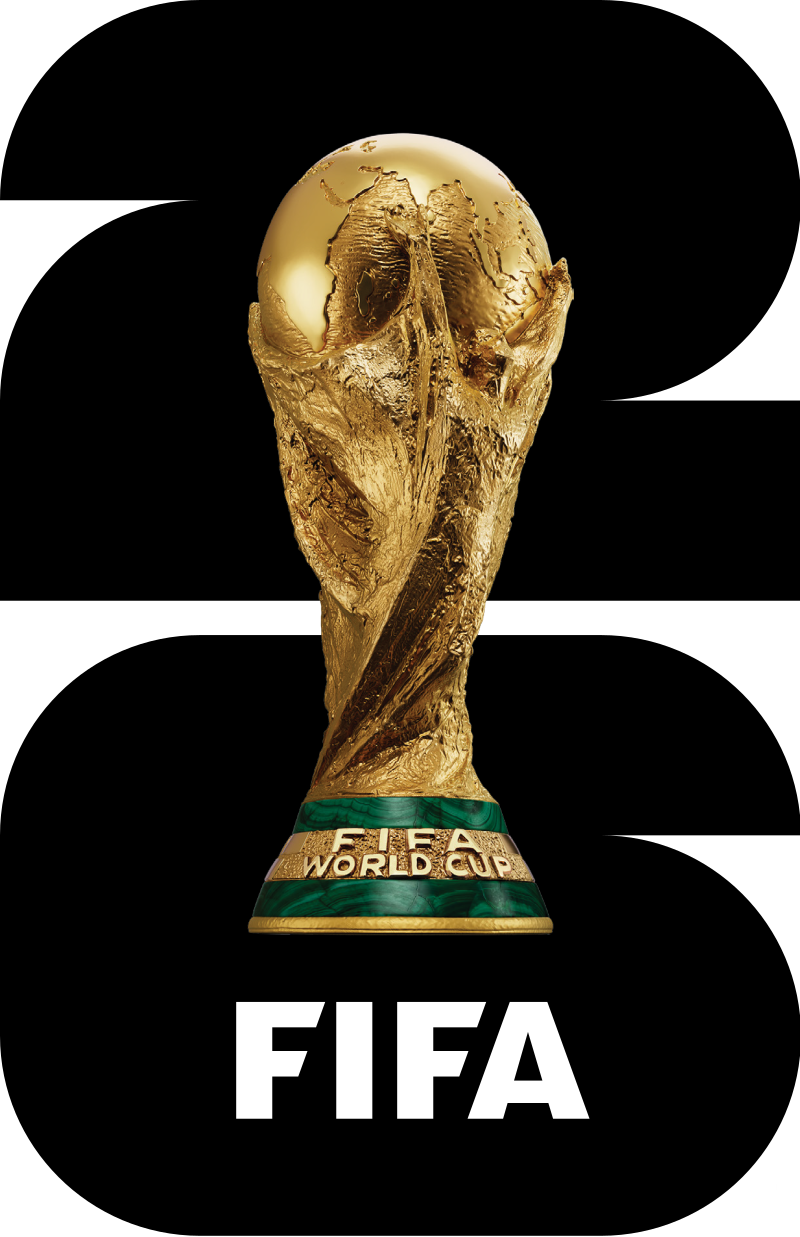 FIFA Fussball-Weltmeisterschaft 2026
FIFA Fussball-Weltmeisterschaft 2026

 Financial
Financial
 ***Global Financial Center
***Global Financial Center

 History
History
 N 2000 - 2100 AD
N 2000 - 2100 AD

 History
History
 M 1500 - 2000 AD
M 1500 - 2000 AD

 International cities
International cities
 ***Global Urban Economic Competitiveness
***Global Urban Economic Competitiveness

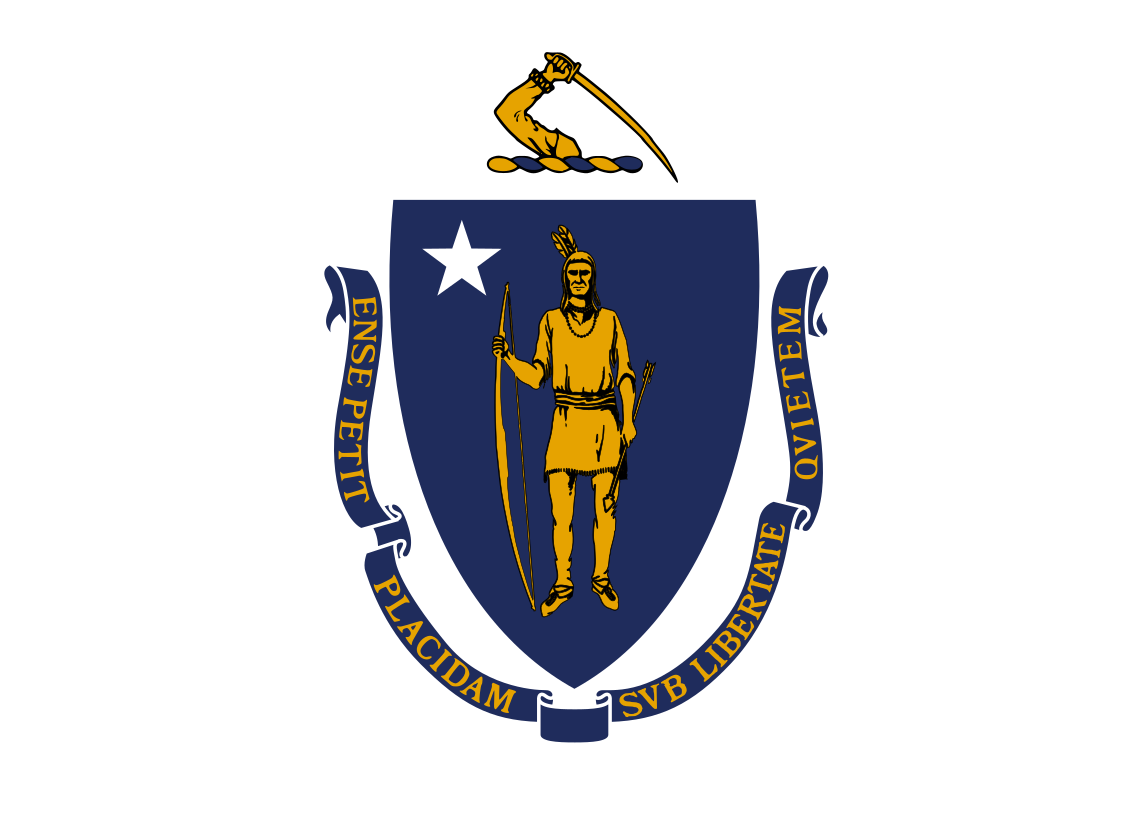 Massachusetts-MA
Massachusetts-MA


 Important port
Important port

Boston (US: /ˈbɔːstən/, UK: /ˈbɒstən/),[5] officially the City of Boston, is the capital and most populous city of the Commonwealth of Massachusetts in the United States and 24th-most populous city in the country.[6] The city proper covers 48.4 square miles (125 km2)[7] with a population of 675,647 in 2020,[2] also making it the most populous city in New England.[8] It is the seat of Suffolk County (although the county government was disbanded on July 1, 1999).[9] The city is the economic and cultural anchor of a substantially larger metropolitan area known as Greater Boston, a metropolitan statistical area (MSA) home to a census-estimated 4.8 million people in 2016 and ranking as the tenth-largest MSA in the country.[10] A broader combined statistical area (CSA), generally corresponding to the commuting area[11] and including Providence, Rhode Island, is home to some 8.2 million people, making it the sixth most populous in the United States.[12]
Boston is one of the oldest municipalities in the United States, founded on the Shawmut Peninsula in 1630 by Puritan settlers from the English town of the same name.[13][14] It was the scene of several key events of the American Revolution, such as the Boston Massacre, the Boston Tea Party, the Battle of Bunker Hill and the siege of Boston. Upon American independence from Great Britain, the city continued to be an important port and manufacturing hub as well as a center for education and culture.[15][16] The city has expanded beyond the original peninsula through land reclamation and municipal annexation. Its rich history attracts many tourists, with Faneuil Hall alone drawing more than 20 million visitors per year.[17] Boston's many firsts include the United States' first public park (Boston Common, 1634), first public or state school (Boston Latin School, 1635)[18] and first subway system (Tremont Street subway, 1897).[19]
Today, Boston is a thriving center of scientific research. The Boston area's many colleges and universities make it a world leader in higher education,[20] including law, medicine, engineering and business, and the city is considered to be a global pioneer in innovation and entrepreneurship, with nearly 5,000 startups.[21][22][23] Boston's economic base also includes finance,[24] professional and business services, biotechnology, information technology and government activities.[25] Households in the city claim the highest average rate of philanthropy in the United States;[26] businesses and institutions rank among the top in the country for environmental sustainability and investment.[27] The city has one of the highest costs of living in the United States[28][29] as it has undergone gentrification.[

Brisbane (/ˈbrɪzbən/ ( listen) BRIZ-bən[9]) is the capital and most populous city of the Australian state of Queensland,[10] and the third-most populous city in Australia, as well as Oceania. Brisbane's metropolitan area has a population of around 2.6 million,[11] and it lies at the centre of the South East Queensland metropolitan region, which encompasses a population of around 3.8 million.[12] The Brisbane central business district is situated within a peninsula of the Brisbane River about 15 km (9 mi) from its mouth at Moreton Bay, a bay of the Coral Sea.[13] Geographically Australia's largest metropolitan area, Brisbane extends in all directions along the hilly floodplain of the Brisbane River Valley between Moreton Bay and the Taylor and D'Aguilar mountain ranges.[14] It sprawls across several of Australia's most populous local government areas, most centrally the City of Brisbane, Australia's most populous local government area. The demonym of Brisbane is "Brisbanite".[15][16]
listen) BRIZ-bən[9]) is the capital and most populous city of the Australian state of Queensland,[10] and the third-most populous city in Australia, as well as Oceania. Brisbane's metropolitan area has a population of around 2.6 million,[11] and it lies at the centre of the South East Queensland metropolitan region, which encompasses a population of around 3.8 million.[12] The Brisbane central business district is situated within a peninsula of the Brisbane River about 15 km (9 mi) from its mouth at Moreton Bay, a bay of the Coral Sea.[13] Geographically Australia's largest metropolitan area, Brisbane extends in all directions along the hilly floodplain of the Brisbane River Valley between Moreton Bay and the Taylor and D'Aguilar mountain ranges.[14] It sprawls across several of Australia's most populous local government areas, most centrally the City of Brisbane, Australia's most populous local government area. The demonym of Brisbane is "Brisbanite".[15][16]
The city and the river are named after Sir Thomas Brisbane who was the governor of New South Wales when the city was founded.[10] The Moreton Bay penal settlement was founded in 1824 at Redcliffe as a place for secondary offenders from the Sydney colony, and soon moved to North Quay in 1825. Brisbane was chosen as Queensland's capital when Queensland separated from New South Wales in 1859. By the late 19th century, the city had grown into a major port and centre of immigration. During World War II, the Allied command in the South West Pacific was based in the city, along with the headquarters for General Douglas MacArthur of the United States Army.[17]
Brisbane is classified as a global city,[18][19] and is an advanced centre of research and innovation in the Asia-Pacific.[20] The city has strengths in technology,[21][22] including mining research and green energy,[23] medicine and biotechnology,[24][25] cryptocurrency and digital industries,[26] and robotics.[27] A transport hub, Brisbane is served by large rail, bus and ferry networks, as well as Australia's largest airport and third-largest seaport.
A diverse city with over 32% of its metropolitan population being foreign-born,[28] Brisbane is consistently ranked among the world's most livable cities.[29] The culture of Brisbane is noted in particular for Queenslander architecture, spring Jacaranda blossoms, and its outdoor dining culture. Brisbane has hosted major events including the 1982 Commonwealth Games, World Expo 88, the 2014 G20 summit, and will host the 2032 Summer Olympics and Paralympics.[30]
Brisbane is a popular tourist destination. Major landmarks and attractions include South Bank Parklands, the Queensland Art Gallery and Gallery of Modern Art, the City Botanic Gardens, City Hall, the Story Bridge, the Mount Coot-tha Botanic Gardens and Lookout, Lone Pine Koala Sanctuary, Howard Smith Wharves, New Farm Park, D'Aguilar National Park, and Moreton Bay and its islands, including Moreton, North Stradbroke and St Helena.

Bristol (/ˈbrɪstəl/ ( listen)) is a city, ceremonial county and unitary authority in England.[7] Situated on the River Avon, it is bordered by the ceremonial counties of Gloucestershire, to the north; and Somerset, to the south. Bristol is the most populous city in South West England.[8] The wider Bristol Built-up Area is the eleventh most populous urban area in the United Kingdom.[5]
listen)) is a city, ceremonial county and unitary authority in England.[7] Situated on the River Avon, it is bordered by the ceremonial counties of Gloucestershire, to the north; and Somerset, to the south. Bristol is the most populous city in South West England.[8] The wider Bristol Built-up Area is the eleventh most populous urban area in the United Kingdom.[5]
Iron Age hillforts and Roman villas were built near the confluence of the rivers Frome and Avon, and around the beginning of the 11th century, the settlement was known as Brycgstow (Old English: 'the place at the bridge'). Bristol received a royal charter in 1155 and was historically divided between Gloucestershire and Somerset until 1373 when it became a county corporate. From the 13th to the 18th century, Bristol was among the top three English cities, after London, in tax receipts.
Bristol was a starting place for early voyages of exploration to the New World. On a ship out of Bristol in 1497, John Cabot, a Venetian, became the first European to land on mainland North America. In 1499, William Weston, a Bristol merchant, was the first Englishman to lead an exploration to North America. At the height of the Bristol slave trade, from 1700 to 1807, more than 2,000 slave ships carried an estimated 500,000 people from Africa to slavery in the Americas. The Port of Bristol has since moved from Bristol Harbour in the city centre to the Severn Estuary at Avonmouth and Royal Portbury Dock.
Bristol's modern economy is built on the creative media, electronics and aerospace industries, and the city-centre docks have been redeveloped as centres of heritage and culture. The city has the largest circulating community currency in the UK, the Bristol Pound, which is pegged to the pound sterling. The city has two universities, the University of Bristol and the University of the West of England, and a variety of artistic and sporting organisations and venues including the Royal West of England Academy, the Arnolfini, Spike Island, Ashton Gate and the Memorial Stadium. It is connected to London and other major UK cities by road and rail, and to the world by sea and air: road, by the M5 and M4 (which connect to the city centre by the Portway and M32); rail, via Bristol Temple Meads and Bristol Parkway mainline rail stations; and Bristol Airport.
Bristol was named the best city in Britain in which to live in 2014 and 2017, and won the European Green Capital Award in 2015.
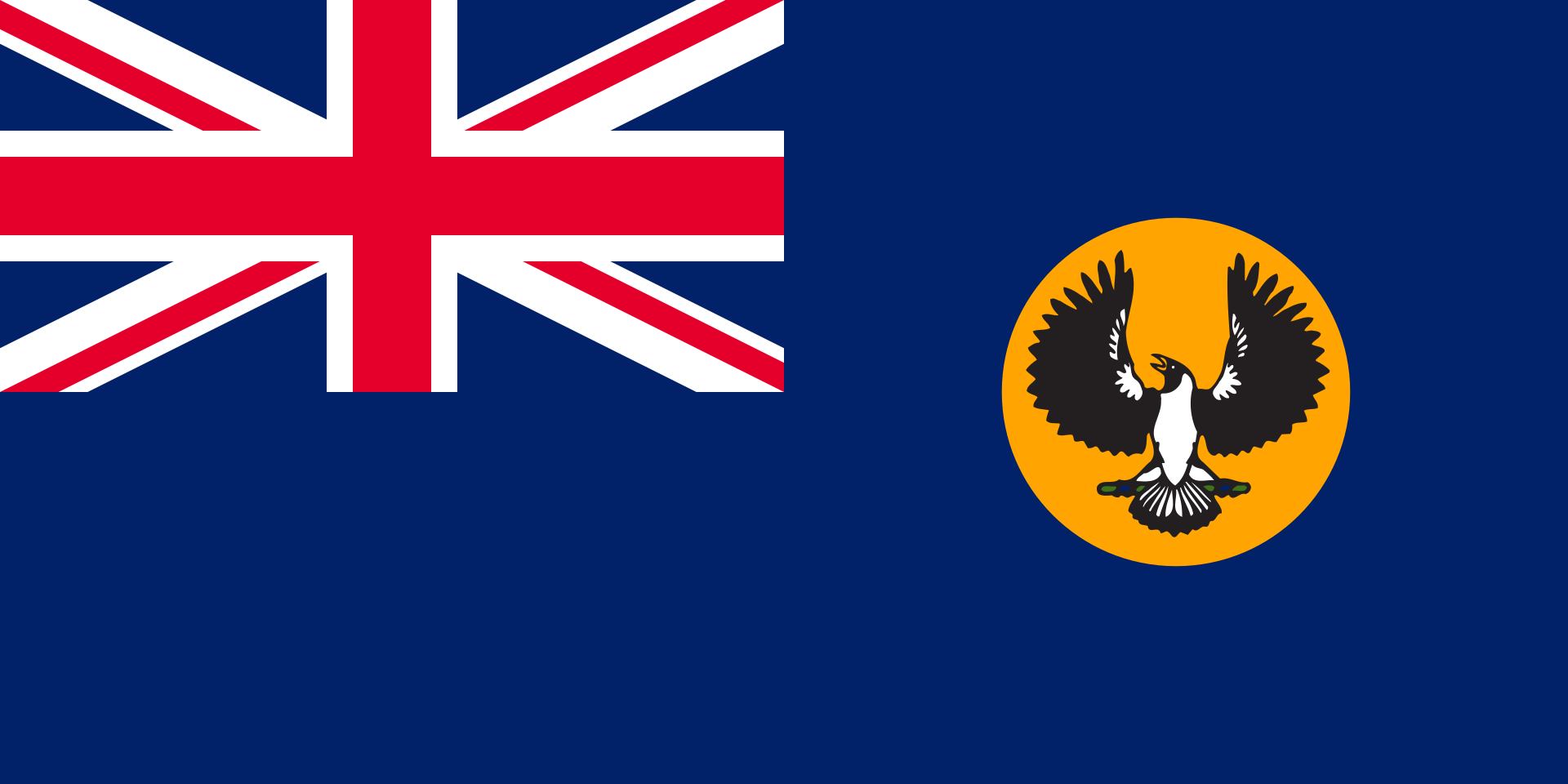 South Australia-SA
South Australia-SA
 Maryland-MD
Maryland-MD
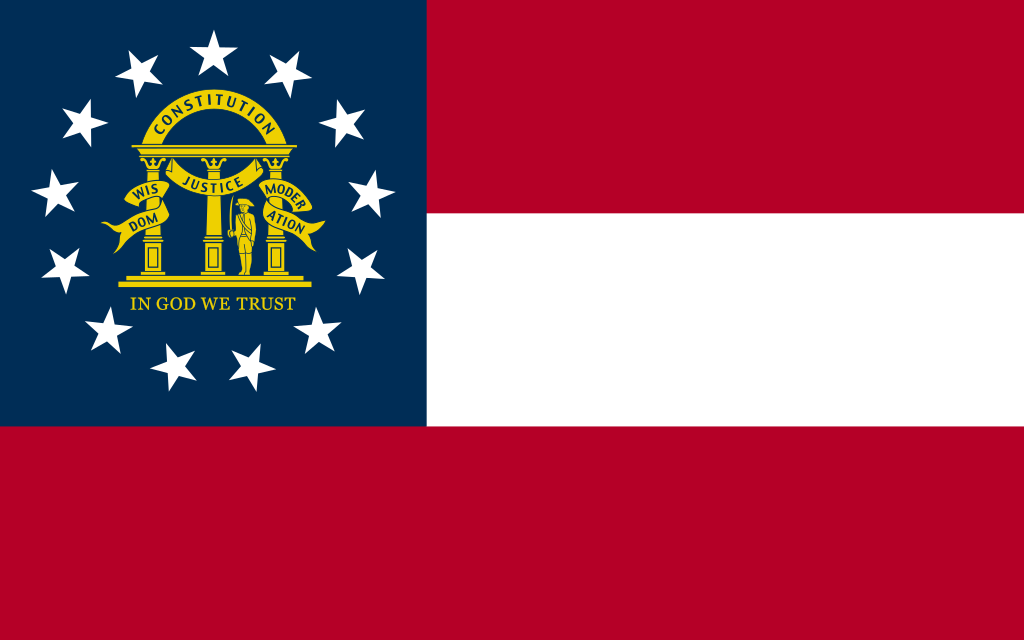 Georgia-GA
Georgia-GA
 Sport
Sport
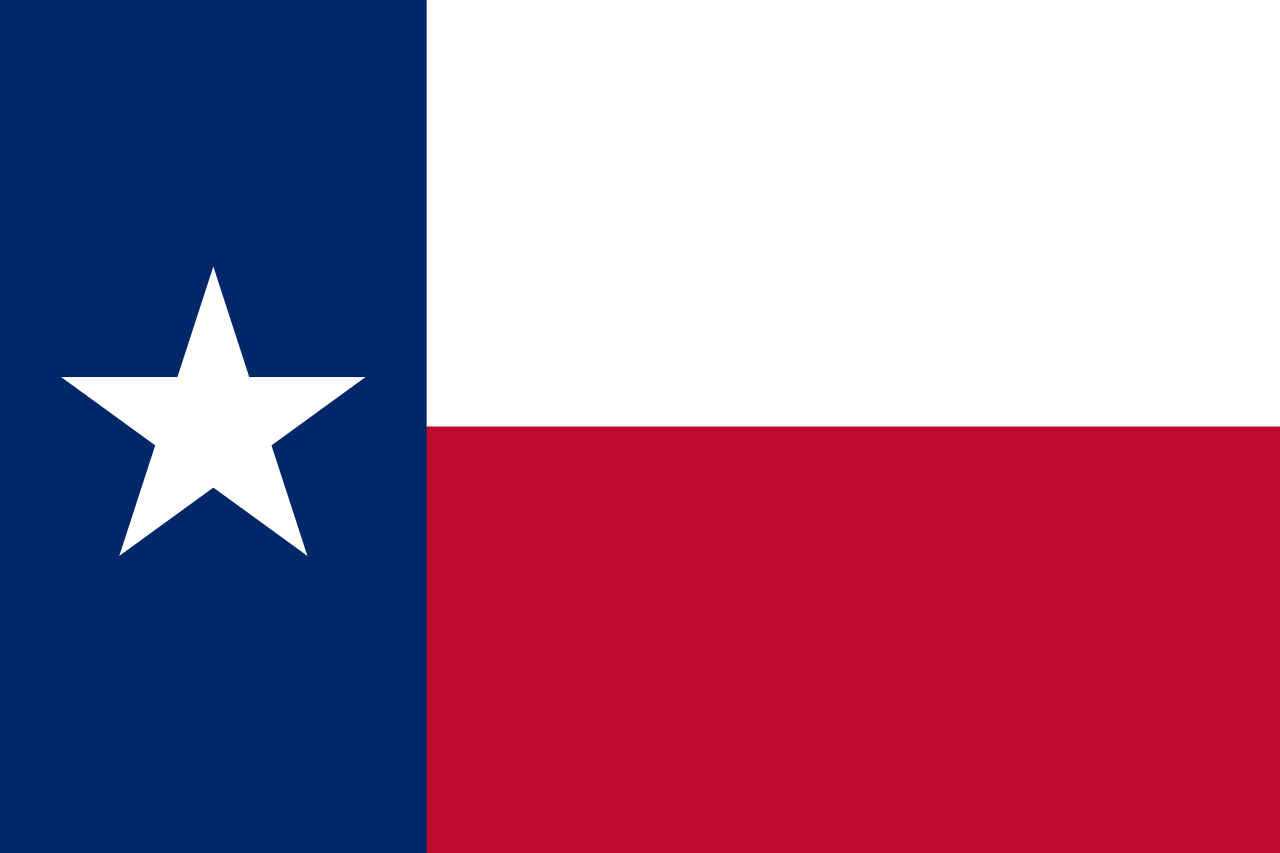 Texas-TX
Texas-TX
 Cities founded by the Romans
Cities founded by the Romans
 World Heritage
World Heritage
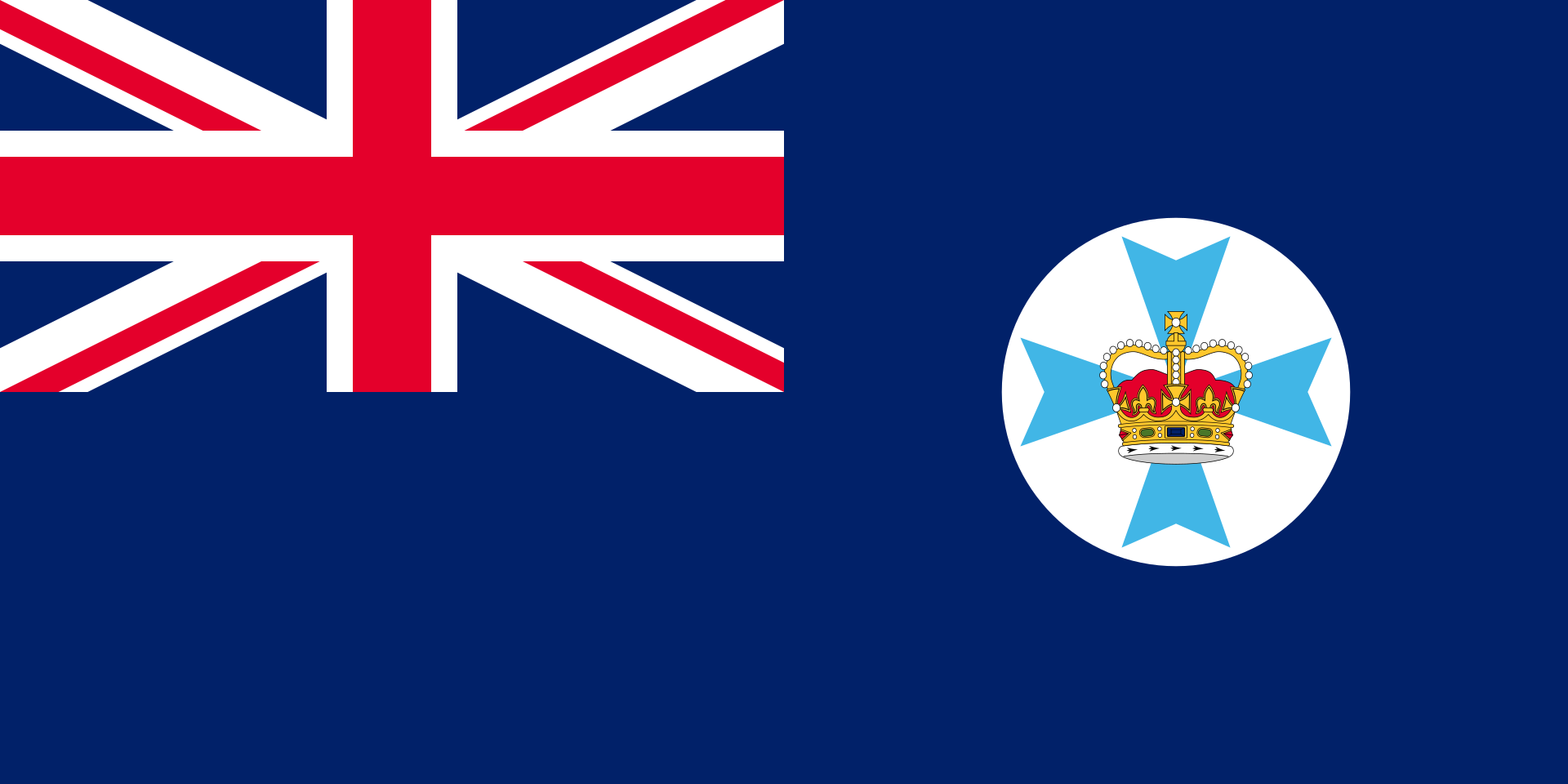 Queensland-QLD
Queensland-QLD